Our Secret Trick: How to Open a Wine Bottle Without a Corkscrew
Are you ever in the mood for a glass of your favorite wine, only to realize you don't have a corkscrew handy? Don't worry; we've got you covered. In this guide, we'll share our secret trick on how to open a wine bottle without a corkscrew, ensuring that you can enjoy your favorite Pacific Rim & Co. wines hassle-free. Whether you're a seasoned wine enthusiast or just starting to explore the world of wine, this handy trick will come in handy for those spontaneous moments.
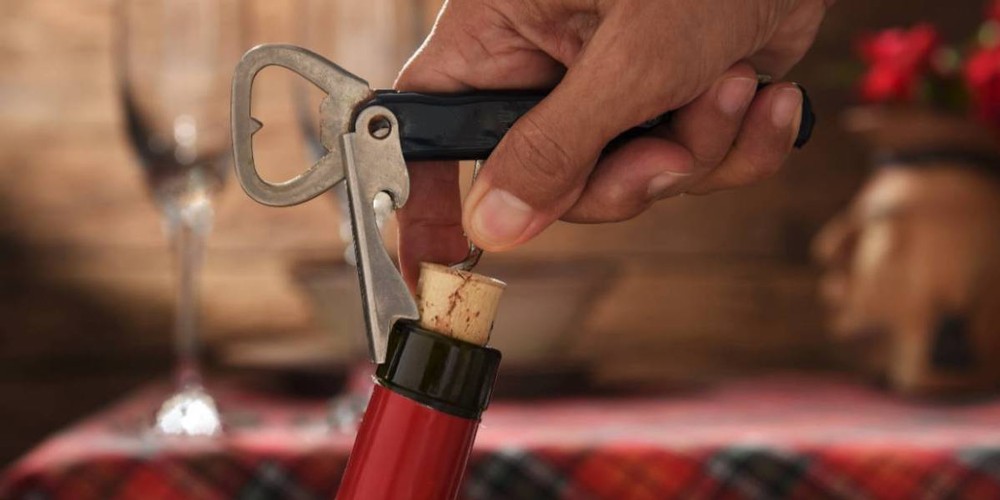
Unlocking the Mystery: How to Open a Wine Bottle Without a Corkscrew
The No-Corkscrew Method
One of the most common dilemmas faced by wine lovers is opening a bottle when a corkscrew is nowhere to be found. But fear not, as there are several alternative methods you can try. One such method involves using a simple household item: a screw. Here's how it's done:
1. Gather Your Tools
To open a wine bottle without a corkscrew, you'll need a screw (preferably one with coarse threads), a screwdriver, and a pair of pliers. These items are usually readily available in most households, making this method incredibly convenient.
Gathering the necessary tools is the first step in successfully opening a wine bottle without a corkscrew. It's essential to choose a screw with coarse threads as it will provide better grip and stability when inserted into the cork. Additionally, having a screwdriver and a pair of pliers ensures that you have the means to secure and extract the screw effectively. This step emphasizes the importance of preparation and resourcefulness in overcoming common challenges, aligning with Pacific Rim & Co.'s commitment to providing practical solutions for wine enthusiasts.
Furthermore, the accessibility of household items like screws, screwdrivers, and pliers underscores the simplicity and versatility of this no-corkscrew method. By utilizing everyday tools, wine lovers can open bottles with ease, regardless of their location or the availability of specialized equipment.
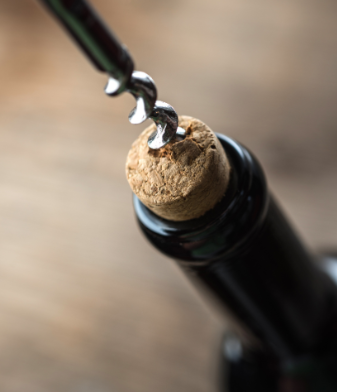
2. Insert the Screw
Carefully insert the screw into the center of the cork, ensuring that it goes in straight. Be gentle to avoid damaging the cork or pushing it into the bottle.
The technique of inserting the screw into the cork requires precision and delicacy to prevent any damage to the cork or bottle. By emphasizing the importance of gentle handling, this step promotes a mindful approach to wine bottle opening, aligning with the principles of appreciation and respect for the product. This attention to detail reflects Pacific Rim & Co.'s dedication to quality and craftsmanship, encouraging consumers to engage with their wines thoughtfully and conscientiously.
Moreover, the act of inserting the screw into the cork symbolizes the initiation of a sensory experience, where each step contributes to the anticipation and enjoyment of the wine. As the screw penetrates the cork, it releases subtle aromas, hinting at the flavors that await. This multisensory aspect enhances the overall wine-drinking experience, transforming a practical task into a moment of sensory exploration and appreciation.
3. Use the Screwdriver
Once the screw is securely in place, use the screwdriver to slowly twist it into the cork. Apply steady pressure and make sure the screw remains centered to prevent any mishaps.
Using the screwdriver to twist the screw into the cork requires patience and precision, as it ensures a secure grip and effective penetration. By applying steady pressure and maintaining the alignment of the screw, wine enthusiasts can avoid potential accidents or damage to the bottle. This meticulous approach reflects Pacific Rim & Co.'s commitment to craftsmanship and attention to detail, fostering a sense of trust and reliability among consumers who value precision and quality in their wine experiences.
Furthermore, the act of twisting the screwdriver symbolizes the culmination of effort and anticipation, leading up to the moment of success when the cork is finally loosened. This gradual process builds suspense and excitement, heightening the satisfaction of achieving the desired outcome. By emphasizing the journey of opening a bottle, rather than just the result, this step encourages you to savor each moment and appreciate the ritualistic aspects of wine consumption. Pacific Rim & Co.'s focus on creating meaningful wine experiences is reinforced by highlighting the emotional and sensory dimensions of this simple yet significant task.
4. Grab the Pliers
Once the screw is fully embedded in the cork, use the pliers to grip the screw firmly. Hold onto the neck of the bottle for stability, then gently pull upward with the pliers while twisting the bottle in the opposite direction. With a bit of patience and finesse, the cork should start to come out.
Using the pliers to grip the screw firmly is essential for maintaining control and leverage during the cork extraction process. The combination of upward pulling force and rotational movement ensures a smooth and effective removal of the cork from the bottle. This coordinated action exemplifies the synergy between technique and tool, highlighting the importance of adaptability and problem-solving in overcoming challenges. By empowering consumers with practical skills and solutions, Pacific Rim & Co. reinforces its commitment to facilitating enjoyable and accessible wine experiences for all.
Moreover, the collaborative effort involved in using the pliers and twisting the bottle reflects the shared enjoyment and camaraderie often associated with wine consumption. Whether enjoying a quiet evening at home or gathering with friends for a celebration, the act of opening a bottle becomes a communal experience that fosters connection and conviviality. Now you know how to open a wine bottle without an opener!
Open Wine Bottles Without a Corkscrew & Enjoy Pacific Rim & Co. Wines!
Opening a wine bottle without a corkscrew may seem like a daunting task, but with the right technique, it can be easily accomplished. Now that you know how to open a wine bottle without a corkscrew, you can rest assured that you will be able to enjoy a bottle of Pacific Rim & co. Wines! Whether you're enjoying a cozy night in or hosting a gathering with friends, knowing how to open a bottle of wine without a corkscrew is a valuable skill to have. So the next time you find yourself without a corkscrew, remember our secret trick and enjoy your favorite Pacific Rim & Co. wines with ease.
Ready to stock up on your favorite Pacific Rim & Co. wines? Visit our online store today to explore our selection of high-quality, sustainable wines from the Pacific Northwest region. Cheers to great wine and unforgettable moments!
Raise Your Glass to the Best Red Wine for Sangria
Sangria, the refreshing wine-based drink that has its roots in Spain, has become a global sensation, enjoyed on sunny afternoons and festive evenings alike. For those looking to craft the perfect sangria, the choice of wine can make all the difference. In this blog, we explore why the best red wine for sangria not only enhances the flavor of this beloved beverage but also reflects your commitment to quality, sustainability, and value.
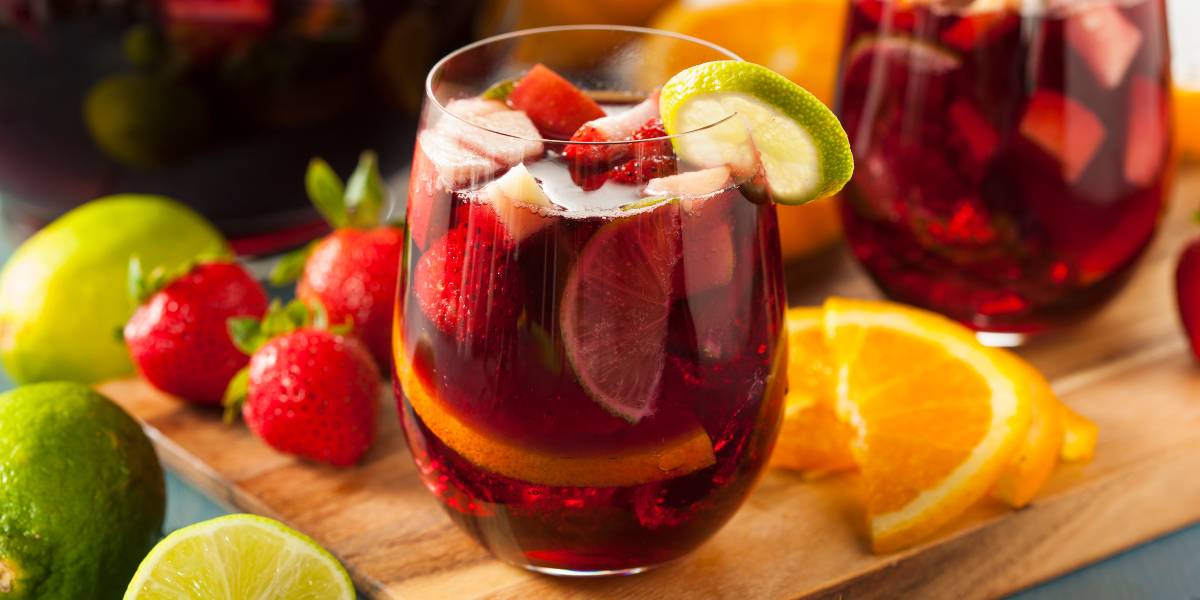
Understanding the Essentials of Sangria
Sangria is more than just a drink; it's a blend of culture, flavor, and tradition. At its core, the wine selected sets the foundation for the taste and quality of the sangria. While the market is flooded with wine choices, selecting the best wine for red sangria narrows down to those that complement the fruity and refreshing characteristics of sangria, without overshadowing its delicate balance.
The Best Wine for Red Sangria: A Closer Look
Pacific Rim & Co., known for their dedication to producing high-quality, sustainable wines, suggests that a Semi-Sweet Red Blend is your go-to option. This wine type perfectly balances the sweetness and acidity required for sangria, making it a popular choice among enthusiasts and connoisseurs alike. The richness of the red wine, coupled with its fruity undertones, complements the traditional sangria ingredients, enhancing the overall taste experience.
Why Semi-Sweet Red Blend?
A Semi-Sweet Red Blend offers a harmonious balance between the sweet and tart flavors found in traditional sangria recipes. This versatility makes it the best red wine for sangria, appealing to both younger consumers and those who appreciate the nuanced tastes of regionally-specific, sustainable wines.
Moreover, Pacific Rim & Co.'s commitment to sustainability means that choosing their Semi-Sweet Red Blend not only elevates your sangria but also aligns with eco-friendly winemaking practices. This approach captures the unique essence of the Pacific Northwest region, ensuring every sip supports environmental stewardship.
The Heart of Sangria: Selecting the Right Wine
The essence of a memorable sangria lies in its wine base. The best red wine for sangria seamlessly marries with the fruits and sweeteners to create a harmonious beverage that's both refreshing and complex. Pacific Rim & Co.'s Semi-Sweet Red Blend stands out as an exemplary choice, offering a balanced profile that enriches the sangria without overwhelming its delicate flavors.
The Importance of Balance in Sangria
Balance in sangria is key; the wine should enhance, not overpower, the blend of fruits and spices. A Semi-Sweet Red Blend accomplishes this by providing a smooth backdrop that complements the sweetness of the fruit, with enough acidity to cut through and refresh the palate. This balance is particularly appealing to younger consumers and those with a discerning taste for wines that not only taste good but also embody the values of sustainability and regional specificity.
Crafting the Perfect Sangria with Pacific Rim & Co.
To create the ultimate sangria, start with a bottle of Pacific Rim & Co.'s Semi-Sweet Red Blend. Here's a simple yet exquisite sangria recipe to get you started:
- 1 bottle of Pacific Rim & Co. Semi-Sweet Red Blend
- 1/4 cup of brandy
- 2 tablespoons of sugar (adjust to taste)
- Freshly sliced oranges, lemons, and berries
- Sparkling water (optional for a fizzy touch)
Combine the wine, brandy, and sugar in a large pitcher, stirring until the sugar dissolves. Add the sliced fruits and let the mixture chill in the refrigerator for at least 4 hours. Serve over ice and top with sparkling water if desired.
Sustainable and Affordable: A Commitment Beyond the Glass
Choosing Pacific Rim & Co.'s wines means more than just enjoying high-quality sangria; it's about supporting a brand that values sustainability, affordability, and the promotion of small brands delivering exceptional value. Their dedication to environmentally friendly winemaking practices ensures that each bottle not only tastes good but also does good for the planet.
Elevate Your Sangria Experience
In search of the best red wine for sangria? Look no further than Pacific Rim & Co.'s Semi-Sweet Red Blend. Its perfect balance, high quality, and sustainable production make it the ideal choice for your next sangria. Embrace the blend of tradition, flavor, and eco-conscious winemaking with every glass.
Ready to elevate your sangria game? Click here to explore Pacific Rim & Co.'s selection of wines and discover more about their commitment to quality, sustainability, and affordability. Don't just make sangria, make a statement. Contact us for more information on our wines and how we're making a difference one bottle at a time.
Love and Wine: The History Behind Romantic Wine
In the world of wine, where terroir whispers stories of ancient vineyards and skilled winemakers, there exists a captivating narrative entwined with romance and passion. Welcome to the enchanting realm of love and wine, where every sip evokes feelings of love and nostalgia. Join us as we delve into the rich history behind romantic wine, exploring its roots, evolution, and significance in the world of enology.
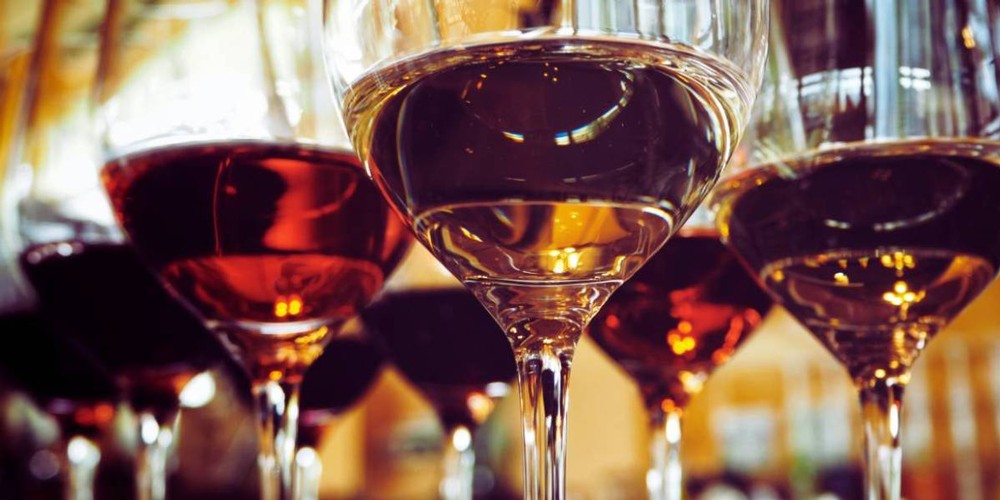
Love and Wine: A Journey Through Romantic Wine
Romantic Wine: A Love Affair in Every Bottle
Imagine a cozy evening illuminated by candlelight, two lovers sharing intimate moments over a glass of velvety wine. This scene has been a timeless emblem of romance, and at the heart of it lies the essence of romantic wine. But what exactly makes a wine romantic? Is it the luscious notes of ripe berries dancing on the palate, or perhaps the subtle whispers of oak that linger in the air? In truth, it's a combination of factors—the story behind the wine, the passion infused into its creation, and the emotions it evokes in those who partake.
According to a study published in the Journal of Consumer Research, the context in which wine is consumed can significantly influence its perceived taste and enjoyment. This phenomenon, known as "situational influence," suggests that the romantic ambiance of a candlelit dinner can enhance the sensory experience of wine, making it taste more flavorful and enjoyable. As such, the ritual of sharing a bottle of wine with a loved one becomes not just an act of indulgence but a celebration of romance itself.
Furthermore, the concept of romantic wine extends beyond mere sensory pleasure—it embodies the stories and traditions woven into the fabric of winemaking. For centuries, winemakers have drawn inspiration from tales of love and passion, infusing their wines with symbolism and meaning.
From the heart-shaped leaves of the grapevine to the intricate rituals of wine production, every aspect of the winemaking process reflects a deep appreciation for the romanticism of wine.
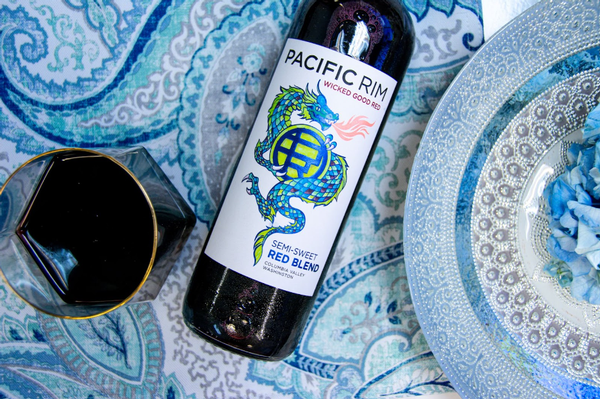
The Origins of Romance: Tracing the Roots of Romantic Wine
To understand the history of romantic wine, we must embark on a journey through time, tracing its origins to ancient civilizations where wine was revered not only for its intoxicating properties but also for its symbolic significance in rituals and celebrations of love. From the poetic verses of the Greeks to the lavish banquets of the Romans, wine has always held a sacred place in matters of the heart.
Historical records from ancient civilizations provide fascinating insights into the role of wine in romantic rituals and ceremonies. In ancient Egypt, for example, wine was often associated with the goddess Hathor, who was revered as the deity of love, beauty, and fertility. Couples would offer wine as a libation to honor Hathor and seek her blessings for a fruitful and harmonious relationship. These ancient customs laid the foundation for the enduring association between wine and romance.
Similarly, in ancient Greece and Rome, wine played a central role in wedding ceremonies and fertility rites. The symposium, a social gathering where wine flowed freely, was not only an occasion for intellectual discourse but also a celebration of love and camaraderie. Guests would raise their glasses in a toast to Aphrodite, the goddess of love, and invoke her blessings upon the newlyweds. These traditions exemplify the deep-rooted connection between wine and romance in ancient cultures.
The Renaissance of Romance: Reviving Tradition in Modern Winemaking
As we transition to the modern era, we witness a renaissance of sorts in the world of winemaking, with a renewed emphasis on tradition, craftsmanship, and sustainability. Winemakers like Pacific Rim & Co. are at the forefront of this movement, embracing time-honored techniques while also incorporating innovative practices to produce high-quality, regionally-specific wines that capture the essence of the land.
Recent market research conducted by Wine Intelligence reveals a growing trend among consumers, particularly millennials, towards wines with a sense of place and authenticity. This shift in consumer preferences underscores the importance of regionally-specific wines like those offered by Pacific Rim & Co., which celebrate the unique terroir of the Pacific Northwest. By honoring tradition and terroir, winemakers can create wines that resonate with consumers on a deeper level, evoking a sense of connection to the land and its heritage.
Moreover, sustainability has become a key focus for both winemakers and consumers alike. According to a report by the Drinks Business, eco-friendly winemaking practices are gaining traction in the industry, driven by concerns about climate change and environmental impact.
Pacific Rim & Co. is committed to sustainable and environmentally friendly winemaking practices, from organic farming methods to energy-efficient production facilities. By prioritizing sustainability, winemakers can not only protect the planet but also preserve the romance and beauty of wine for generations to come.
Pacific Rim & Co. Romantic Wines
Pacific Rim & Co. offers a delightful array of romantic wines that are perfect for any occasion. Whether you're celebrating a special anniversary or enjoying a quiet evening with your significant other, our wines are sure to set the mood for romance. Here are a few of our top picks when it comes to love and wine:
1. Pacific Rim Semi-Sweet Red Blend: This semi-sweet red blend is a harmonious fusion of fruit-forward flavors and subtle sweetness, making it an ideal choice for a romantic dinner date. With its smooth texture and tantalizing aromas, it's sure to enchant your senses and leave you craving more.
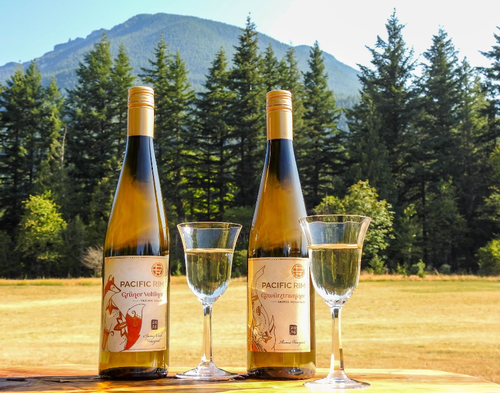
2. Pacific Rim Gewürztraminer: Our Gewürztraminer is a true gem of the Pacific Northwest, known for its captivating floral aromas and exotic spice notes. With its vibrant acidity and lingering finish, it's the perfect wine to pair with spicy cuisine or enjoy on its own as you bask in the glow of candlelight.
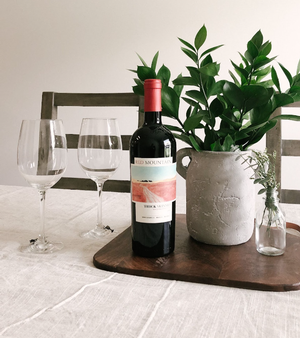
3. Thick-Skinned Red Mountain: Named after the rugged terrain of the Red Mountain AVA, this bold red wine is as robust and resilient as its namesake. With its deep, dark fruit flavors and velvety tannins, it's the perfect choice for a cozy night in by the fireplace with your loved one.
No matter which wine you choose, you can trust that each bottle is crafted with the utmost care and dedication to quality. So why not add a touch of romance to your next special occasion with Pacific Rim & Co. wines?
Embracing Sustainability: A Commitment to the Earth and Each Other
At Pacific Rim & Co., we believe that true romance extends beyond the bottle—it's about fostering a deep connection with the earth and each other. That's why we're committed to sustainable and environmentally friendly winemaking practices, ensuring that future generations can continue to enjoy the fruits of the vine for years to come.
From our vineyards nestled in the picturesque landscapes of the Pacific Northwest to our eco-friendly production facilities, every aspect of our process is designed with the utmost care and respect for the planet.
A Toast to Love and Wine
In conclusion, love and wine have shared a timeless bond throughout history, intertwining their stories in a tapestry of romance and passion. From ancient rituals to modern-day celebrations, wine has been a constant companion in our journey through life's most cherished moments. As you raise your glass to toast to love and all its wonders, remember that every sip is infused with the rich history and enduring spirit of romantic wine.
So why not indulge in a bottle of Pacific Rim Riesling and experience the romance for yourself? Whether you're sharing it with a loved one or savoring it in solitude, our wines are sure to ignite your senses and leave you longing for another taste of romance. Visit our site today to learn more about our wines and discover the magic of Pacific Rim & Co.
What Is a Dry Wine? A Simple Guide
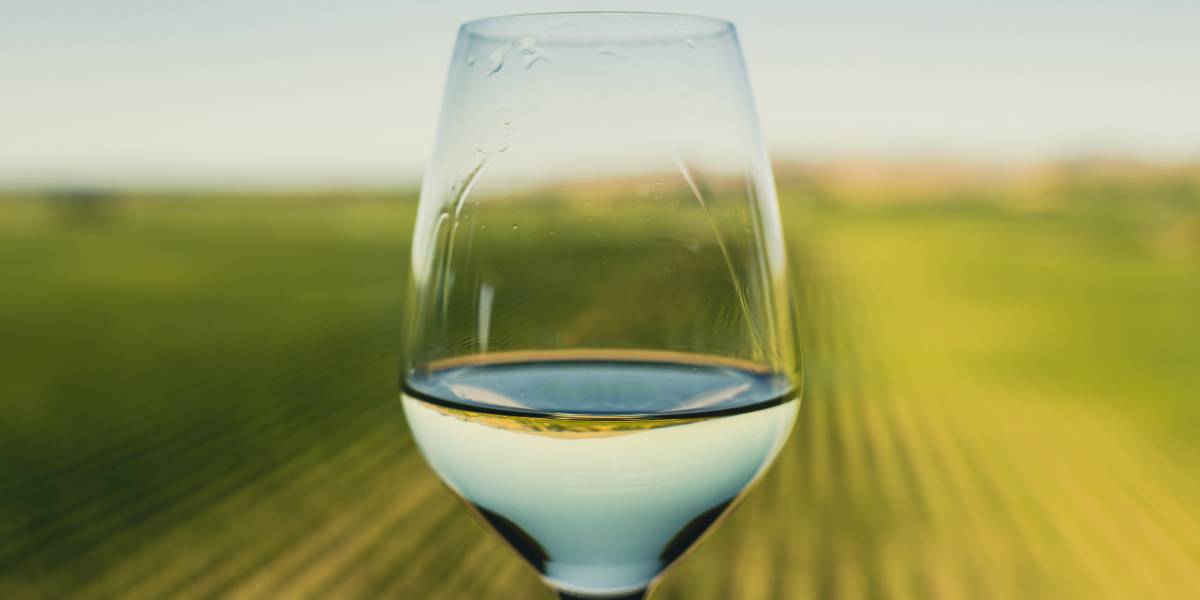 When you venture into the world of wine, the term 'dry wine' often surfaces, sparking curiosity among enthusiasts. But what is a dry wine? This question is not just a matter of taste but also of understanding the art and science behind winemaking. Pacific Rim & Co., known for its commitment to producing high-quality, sustainable, and affordable wines, aims to shed light on this topic. Our guide is designed for wine lovers of all generations, especially younger consumers and those who value regionally specific, sustainable, and high-quality wines.
When you venture into the world of wine, the term 'dry wine' often surfaces, sparking curiosity among enthusiasts. But what is a dry wine? This question is not just a matter of taste but also of understanding the art and science behind winemaking. Pacific Rim & Co., known for its commitment to producing high-quality, sustainable, and affordable wines, aims to shed light on this topic. Our guide is designed for wine lovers of all generations, especially younger consumers and those who value regionally specific, sustainable, and high-quality wines.
Understanding Dry Wine
To put it simply, a dry wine is defined by its low sugar content. During fermentation, yeast converts the grapes' natural sugars into alcohol. If this process continues until almost all sugar is converted, the wine is considered dry. The question of what is a dry wine underscores a wine's characteristics that are often misunderstood. Dry wines can range from light and crisp to full-bodied and complex, offering a spectrum of flavors for every palate.
Dry vs Sweet Wine: The Sugar Content Battle
The comparison of dry vs sweet wine hinges on residual sugar levels – the sugar remaining after fermentation. While dry wines boast minimal residual sugar, sweet wines have higher levels, either from stopping fermentation early or by adding sugar post-fermentation. This contrast not only influences taste but also the pairing of wine with food, making understanding this difference crucial for any wine enthusiast.
Pacific Rim & Co.'s approach to winemaking emphasizes the balance between flavor and sustainability. Our Pacific Rim Riesling, for example, showcases the unique essence of the Pacific Northwest, embodying our passion for quality and environmental stewardship.
The Spectrum of Wine Dryness
Wines are often categorized into dry, off-dry (or semi-sweet), and sweet, based on their residual sugar content. This spectrum helps consumers navigate their preferences, especially when looking for wines that complement their health and budget-conscious lifestyles. For those new to wine, starting with a dry wine might seem daunting, but it's an excellent way to explore the nuanced flavors wine has to offer.
Region-Specific Dry Wines
Wine's flavor profile, including its dryness or sweetness, is significantly influenced by its region. The climate, soil, and winemaking traditions of a region contribute to the unique characteristics of its wine. Pacific Rim & Co. takes pride in capturing the essence of the Pacific Northwest in our wines, offering an authentic taste of the region's terroir.
Sustainable Winemaking and Dry Wine
Sustainability in winemaking is not just about environmental responsibility; it's about creating wines that reflect their origin's purity and quality. Pacific Rim & Co. is dedicated to sustainable practices, from vineyard management to bottling, ensuring that each bottle offers not just a taste but a testament to our commitment to the planet and our consumers.
Health and Budget Considerations
For health-conscious individuals, dry wines offer the advantage of lower sugar content, which can be a consideration in dietary choices. Additionally, our focus on affordability ensures that enjoying high-quality, sustainable wines does not have to be a luxury. Pacific Rim & Co. strives to deliver value, making our wines accessible to a broader audience.
The Joy of Discovering Dry Wines
Understanding what is a dry wine opens up a world of flavors and experiences for wine enthusiasts. Whether you're exploring dry vs sweet wines or delving into the impact of region and sustainability on wine quality, there's always something new to discover. Pacific Rim & Co. invites you to embark on this journey with us, exploring the diverse and rich world of wine.
As you explore the nuances of dry and sweet wines, we encourage you to learn more about our commitment to sustainable winemaking and the unique flavors of the Pacific Northwest. If you're eager to explore our collection or have any questions, we invite you to contact us for more information. Let's raise a glass to discovery, sustainability, and the endless possibilities that wine brings to our lives.
Dry Red Wine Guide
In the vast landscape of wine, few varieties evoke as much passion and intrigue as dry red wines. Whether you're a seasoned wine enthusiast or just beginning your journey into the world of enology, understanding the nuances of dry red wine can enhance your appreciation and enjoyment of this timeless beverage. Join us as we embark on a flavorful journey through the realm of dry red wines, exploring their characteristics, versatility, and even their role in culinary endeavors, including as a key ingredient in cooking.
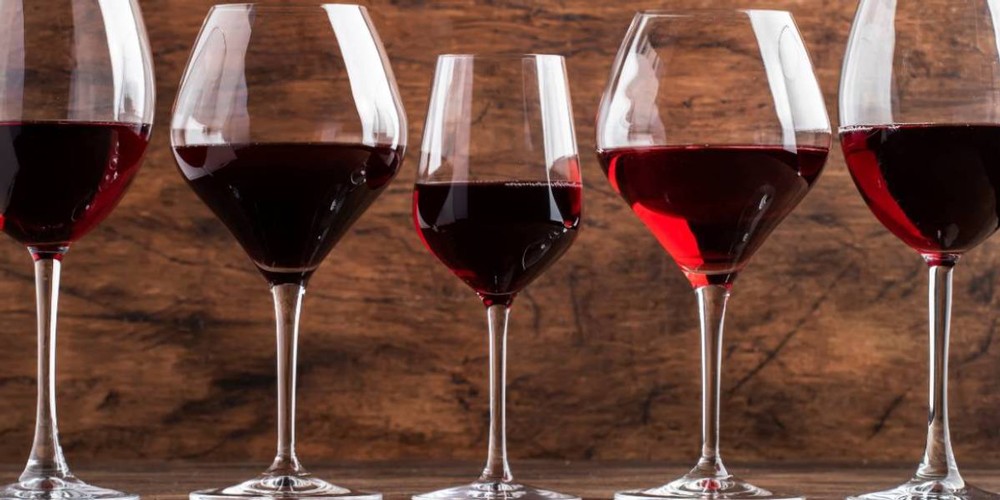
Exploring the Essence of Dry Red Wine
Dry Red Wine: A Definition
At the heart of any discussion about dry red wine lies its defining characteristic: dryness. Unlike sweeter red wines, which contain residual sugar, dry red wines undergo fermentation until nearly all sugars are converted into alcohol, resulting in a drier taste profile. This dryness is often accompanied by bold flavors, robust tannins, and a lingering finish, making dry red wines a favorite among those with discerning palates.
According to Wine Enthusiast, dry red wines typically contain less than 10 grams of residual sugar per liter, contributing to their dry taste profile. This low sugar content allows the natural flavors of the grapes and the influence of oak aging to shine through, resulting in wines that are complex and full-bodied. Additionally, the fermentation process for dry red wines often involves extended maceration, where the grape skins remain in contact with the juice, extracting color, tannins, and flavor compounds that contribute to the wine's depth and structure.
Dry red wines encompass a wide range of varietals, each with its unique characteristics shaped by factors such as grape variety, terroir, and winemaking techniques. For example, Cabernet Sauvignon, known for its bold tannins and flavors of blackcurrant and cedar, thrives in regions with warm climates and well-drained soils, such as Bordeaux and California's Napa Valley. In contrast, Pinot Noir, celebrated for its delicate aromas and silky texture, excels in cooler climates like Burgundy and Oregon's Willamette Valley, where it develops nuanced flavors of cherry, raspberry, and earth.

Varietal Diversity
One of the most captivating aspects of dry red wine is its incredible diversity of varietals. From the iconic Cabernet Sauvignon and Merlot to the rustic charm of Sangiovese and Tempranillo, each varietal brings its unique characteristics to the glass. Whether you prefer the rich fruitiness of Pinot Noir or the structured elegance of a Malbec, there's a dry red wine to suit every taste and occasion.
The diversity of dry red wine varietals extends beyond flavor profiles to encompass a spectrum of aromas, textures, and aging potential. For example, Syrah, also known as Shiraz in Australia, offers a range of expressions, from bold and peppery in cooler climates to ripe and fruit-forward in warmer regions. Meanwhile, Nebbiolo, the noble grape of Italy's Piedmont region, produces wines with firm tannins, high acidity, and flavors of red fruit, tar, and roses, which evolve beautifully with age.
Regions renowned for their dry red wines often have long-standing traditions and regulations governing grape growing and winemaking practices, ensuring consistency and quality across vintages. For instance, the Bordeaux region in France follows strict classifications, with wines classified into tiers such as First Growth, Second Growth, and so on, based on factors like vineyard reputation, grape variety, and aging potential. Similarly, the Chianti Classico region in Tuscany adheres to specific guidelines regarding grape composition and aging requirements to uphold the quality and authenticity of its signature Sangiovese-based wines.
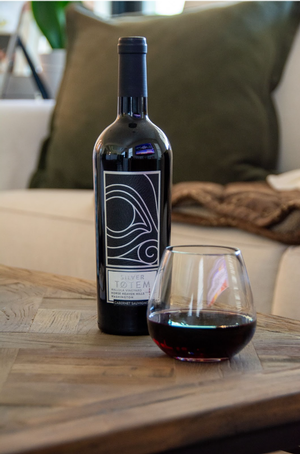
The Versatility of Dry Red Wine
From Casual Sipping to Fine Dining
One of the enduring appeals of dry red wine lies in its remarkable versatility. Whether enjoyed on its own as a casual evening indulgence or paired with gourmet cuisine for a memorable dining experience, dry red wine has a knack for elevating any occasion. Its robust flavors and balanced acidity make it an ideal companion for everything from hearty stews and grilled meats to artisanal cheeses and decadent desserts.
Dry red wines' versatility extends beyond meal pairings to include a wide range of social settings and occasions. According to a study published in the Journal of Wine Research, dry red wine consumption is associated with social bonding and relaxation, making it a popular choice for gatherings with friends and family. Whether shared over a leisurely dinner or enjoyed during a lively celebration, dry red wine fosters conviviality and enhances the enjoyment of shared experiences.
In addition to its social appeal, dry red wine's versatility extends to its ability to adapt to various aging processes and maturation techniques, resulting in a diverse array of styles and expressions. For example, some dry red wines are aged in oak barrels to impart flavors of vanilla, spice, and toast, while others undergo extended bottle aging to develop tertiary aromas of leather, tobacco, and forest floor. This diversity allows wine enthusiasts to explore different aging methods and discover new dimensions of flavor and complexity in their favorite varietals.
Dry Red Wine for Cooking: Elevating Culinary Creations
Beyond the glass, dry red wine also shines as a secret ingredient in the kitchen. Its depth of flavor and acidity can enhance the taste of sauces, marinades, and braises, adding complexity and richness to a wide range of dishes. From classic Coq au Vin to modern culinary creations, dry red wine for cooking is a versatile ally for home chefs looking to elevate their culinary repertoire.
Dry red wine's acidity and tannins make it an excellent flavor enhancer in cooking, helping to balance rich ingredients like meat and cheese and adding depth to sauces and reductions. According to the American Heart Association, incorporating dry red wine into recipes can also provide health benefits, such as antioxidants and polyphenols, which may help reduce the risk of heart disease and inflammation when consumed in moderation as part of a balanced diet.
When selecting a dry red wine for cooking, it's essential to choose a bottle with flavors and characteristics that complement the dish you're preparing. For example, robust and full-bodied wines like Cabernet Sauvignon and Syrah are well-suited for hearty dishes such as beef stew and braised short ribs, where their intense flavors can stand up to bold ingredients and spices. Conversely, lighter-bodied wines like Pinot Noir and Grenache pair beautifully with delicate dishes such as roast chicken and pasta primavera, adding subtle complexity without overpowering the other ingredients.
Pacific Rim & Co.: A Commitment to Quality and Sustainability
At Pacific Rim & Co., we share your passion for high-quality, sustainable wines that reflect the unique essence of their region. Our dedication to environmentally friendly winemaking practices ensures that each bottle of Pacific Rim wine not only delights the palate but also supports a healthier planet. Explore our collection of premium wines, including our flagship Pacific Rim Riesling, and discover the perfect companion for your next culinary adventure.
Pacific Rim & Co. takes pride in its commitment to sustainability throughout the winemaking process. From vineyard management practices that prioritize soil health and biodiversity to energy-efficient production facilities and eco-friendly packaging, every aspect of our operations is designed to minimize environmental impact. Our dedication to sustainability extends beyond the vineyard, as we actively engage with local communities and conservation organizations to promote responsible stewardship of natural resources.
In addition to our environmental initiatives, Pacific Rim & Co. is dedicated to producing wines of uncompromising quality that showcase the unique terroir of the Pacific Northwest region. Our winemaking team employs traditional techniques and innovative approaches to crafting wines that capture the essence of the land, from the crisp acidity of our Rieslings to the rich complexity of our red varietals. With a focus on balance, elegance, and expression, each bottle of Pacific Rim wine reflects our commitment to excellence and the artistry of winemaking.
Raise a Glass to Dry Red Wine
As we conclude our exploration of dry red wine, we invite you to raise a glass to this timeless beverage. Whether enjoyed on its own or as a culinary companion, dry red wine captivates the senses with its bold flavors, diverse varietals, and rich regional heritage. At Pacific Rim & Co., we're proud to offer a curated selection of high-quality, sustainable wines that embody the spirit of our beloved Pacific Northwest region. Cheers to the joys of dry red wine, and may each sip bring you closer to the artistry and wonder of winemaking.
Ready to experience the allure of dry red wine for yourself? Explore our selection of premium wines and discover your new favorites today. Click here to visit our service page and shop now, or contact us for more information on our sustainable winemaking practices and regional offerings. Cheers to great wine and unforgettable moments!